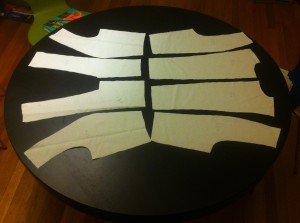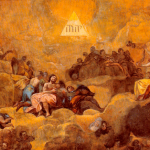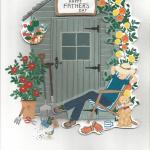I’ve gotten to coast on my university’s JSTOR access for alums, but the NYRB has an interesting proposal to make research journals accessible to anyone:
The entire system of communicating research could be made less expensive and more beneficial for the public by a process known as “flipping.” Instead of subsisting on subscriptions, a flipped journal covers its costs by charging processing fees before publication and making its articles freely available, as “open access,” afterward. That will sound strange to many academic authors. Why, they may ask, should we pay to get published? But they may not understand the dysfunctions of the present system, in which they furnish the research, writing, and refereeing free of charge to the subscription journals and then buy back the product of their work—not personally, of course, but through their libraries—at an exorbitant price. The public pays twice—first as taxpayers who subsidize the research, then as taxpayers or tuition payers who support public or private university libraries.
By creating open-access journals, a flipped system directly benefits the public. Anyone can consult the research free of charge online, and libraries are liberated from the spiraling costs of subscriptions. Of course, the publication expenses do not evaporate miraculously, but they are greatly reduced, especially for nonprofit journals, which do not need to satisfy shareholders.
It’s not an entirely hypothetical idea. One idea is simply to use grants to cover the cost of publication, along with the other costs of research, but some universities are already subsidizing publication costs for researchers who choose to publish in flipped journals.
I remain glad that Max Gladstone’s nerdy posts aren’t behind any kind of paywall at all. In order to discuss how fantasy authors build foreign worlds, and how he built the world of Full Fathom Five and his Craft Sequence, he revealed this bizarre artifact of Chinese to English translation:
Translation, done right, is brilliant and difficult, but when done even a little wrong it can break the meaning and cultural associations of the source text. My favorite example: there’s an old Chinese sport / pastime that features prominently in Ming Dynasty fiction, which most modern translations render as “football.” Now, think about Ming Dynasty football. Have a vision in your head of what that would look like? Does it feature Ming Dynasty Pele or Peyton Manning?
Yeah, well, you’re both wrong. The term translated “Football” here refers to a game in which folks stand in a circle and attempt to pass a leather ball from one to another without using their hands. We’re talking, basically, about hackeysack as played by 15th-century Chinese gentlemen. I don’t know why American translators shrink from calling a hackeysack a hackeysack—except maybe that (a) it stinks of modernity (in much the same reason you can’t name a character in historical fiction about 11th century England “Tiffany” even though people back then were named Tiffany), and (b) it summons up weird cultural associations, mostly of skinny dreadlocked barefoot prep school boys kicking the sack with weed smoke heavy on the air and Widespread Panic playing in the background. (I guess that might be Mumford & Sons these days? I AM NOT COOL.) Now, I think those cultural associations are informative and interesting, but I’m not a professional translator and apparently there’s been a consensus of translation—but the consensus means uninformed readers of translations that describe the sport as “football” will have a picture of what’s happening in the story that’s as vivid as it is incorrect.
This point, and the rest of the post that follows, reminds me of the difficulty of conveying what is vulgar in period plays and movies. It’s hard for the viewer (or the reader!) to notice the violation of norms they’re not already fluent in.
Lev Grossman is the author of the Magicians trilogy (the newest installment of which (The Magician’s Land) debuted this week, and unfortunately–I didn’t like it). But I did like his discussion of C.S. Lewis in The Atlantic:
[I]t’s the way he uses language—which is nothing like the way fantasists used language before him. There’s no sense of nostalgia. There’s no medieval floridness. There’s no fairy tale condescension to the child reader. It’s very straight, and very clean—there’s no Vaseline on the lens. You see everything clearly, not with sparkles or a flowery sense of wonderment, but with very specific physical details. Look at the attention to detail as you watch Lucy going through the wardrobe:
This must be a simply enormous wardrobe!” thought Lucy, going still further in and pushing the soft folds of the coats aside to make room for her. Then she noticed that there was something crunching under her feet. “I wonder is that more mothballs?” she thought, stooping down to feel it with her hand. But instead of feeling the hard, smooth wood of the floor of the wardrobe, she felt something soft and powdery and extremely cold. “This is very queer,” she said, and went on a step or two further.
Next moment she found that what was rubbing against her face and hands was no longer soft fur but something hard and rough and even prickly. “Why, it is just like branches of trees!” exclaimed Lucy. And then she saw that there was a light ahead of her; not a few inches away where the back of the wardrobe ought to have been, but a long way off. Something cold and soft was falling on her. A moment later she found that she was standing in the middle of a wood at night-time with snow under her feet and snowflakes falling through the air.
]She feels the softness of the coats, she hears the crunching under her feet, she bends down and feels the snow, she feels the prickliness of the trees, and just like that she’s through the wardrobe and into Narnia. There are no special effects in the passage. He’s making magic, but he’s making magic out of very ordinary physical impressions. It’s very powerful, and it’s very new. I don’t think anybody wrote this way before he did. He came up with a new way to describe magic that made it feel realer than it ever had.
The next link is arguably connected, because it has the phrase “stab in the dark” in the title, which is kinda what Lucy Pevensie took, but I really need no excuse to share this story about randomness:
Like other swidden farmers, the Kantu’ would establish new farming sites ever year in which to grow rice and other crops. Unlike most other swidden farmers, the Kantu’ choose where to place these fields through a ritualised form of birdwatching. They believe that certain species of bird – the Scarlet-rumped Trogon, the Rufous Piculet, and five others – are the sons-in-law of God. The appearances of these birds guide the affairs of human beings. So, in order to select a site for cultivation, a Kantu’ farmer would walk through the forest until he spotted the right combination of omen birds. And there he would clear a field and plant his crops.
Dove figured that the birds must be serving as some kind of ecological indicator. Perhaps they gravitated toward good soil, or smaller trees, or some other useful characteristic of a swidden site. After all, the Kantu’ had been using bird augury for generations, and they hadn’t starved yet. The birds, Dove assumed, had to be telling the Kantu’something about the land. But neither he, nor any other anthropologist, had any notion of what that something was.
He followed Kantu’ augurers. He watched omen birds. He measured the size of each household’s harvest. And he became more and more confused. Kantu’ augury is so intricate, so dependent on slight alterations and is-the-bird-to-my-left-or-my-right contingencies that Dove soon found there was no discernible correlation at all between Piculets and Trogons and the success of a Kantu’ crop. The augurers he was shadowing, Dove told me, ‘looked more and more like people who were rolling dice’.
Stumped, he switched dissertation topics. But the augury nagged him. He kept thinking about it for ‘a decade or two’. And then one day he realised that he had been looking at the question the wrong way all the time. Dove had been asking whether Kantu’ augury imparted useful ecological information, as opposed to being random. But what if augury was useful precisely because it was random?
The Aeon article goes on to discuss other circumstances in which choosing by happenstance represents an improvement over our own, biased heuristics.
That’s not the most Leah-bait-y article I found this week. That prize has to go to McSweeney’s list of Alternatives to Platonic Love, which includes:
Newtonian Love – There’s a strong attraction between your bodies.
Shakespearean Love – Sometimes you pretend to be other people in bed.
Heisenbergian Love – Moving fast but you don’t know where it’s going.
Speaking of love and its discontents, Elizabeth Stoker Bruenig had an interesting take on the urge for marital completionism in polyamorous or monogamous relationships. She writes:
How can we possibly cope when, through no evident fault of our own, we come to require for our happiness that which is manifestly evil? That this is a condition of fallenness doesn’t offer any immediate answers. Yes, we come to such situations because we are fallen; but does this mean that we are honestly and truly in situations where happiness is, through no wrongdoing of ours, utterly impossible? For instance, consider the man who evidently needed BDSM to be happy, while his wife could not be happy with it. It would appear one or more of them was simply destined to be unhappy within the parameters of monogamous marriage. Neither of them were by their mere desires doing anything wrong, yet they wound up in a tragic sort of bind: live with un-met needs, or destroy the monogamous character of the marriage. This is tragedy.<
But the view that a tragic situation must conclude in either gross unhappiness or an immediate violation of virtue is predicated upon the finality of tragedy, or the idea that “this is all that there is.” Quash points out that the Christian view of tragedy offers much more:
“My view is rather than stopping short of tragedy, circumventing tragedy or resting with tragedy, Christianity’s doctrines embrace and heighten tragedy when it is understood a certain way. They do so in order simultaneously to acknowledge tragedy’s full power to disrupt, disturb, and destroy – making people the dungeons of themselves – and also to let it mean more than itself. Far from being anti-tragic, and concerned with the evasion or denial of tragic experience, I will argue that the Christian narrative is about a full entry into such an experience, in order to suggest it might have a ‘beyond’ – thus refusing to make an idol of the tragic moment.”
The Christian view, in other words, acknowledges and realizes tragedy without permitting it to define an entire worldview, thus permitting all kinds of travesties, like the destruction of monogamy in marriage. Yes, the Christian frame agrees, there are tragic situations: but the needs which must go un-met or the desires un-fulfilled have no finitude because human life itself continues. Desires and needs that conflict with the good and the good of others are the result of a temporary disturbed order, but with God order is undisturbed, and the Christian hope points to eventual unity with that order.
And, finally, here’s my weekly Halloween costume status report (an attempt to force myself to come to order in this life). I made decent progress this week, cutting out all the bodice pieces for my test muslin.
And boy am I glad I did a test run! As I anticipated when I saw the drawings on the pattern case, the bodice is way too short. Matching the eventual black of the coat with black pants is annoying enough, without trying to match a black shirt, too. And, as you can see, a shirt would be very necessary with the pattern in its current form.
The pattern has spaces where you can add length, so that’s what I’ll be doing this week: drawing new pattern pieces and (hopefully) transferring them to a second muslin. That should fix the length problem, but nothing will ameliorate the agony of setting sleeves.
For more Quick Takes, visit Conversion Diary!















